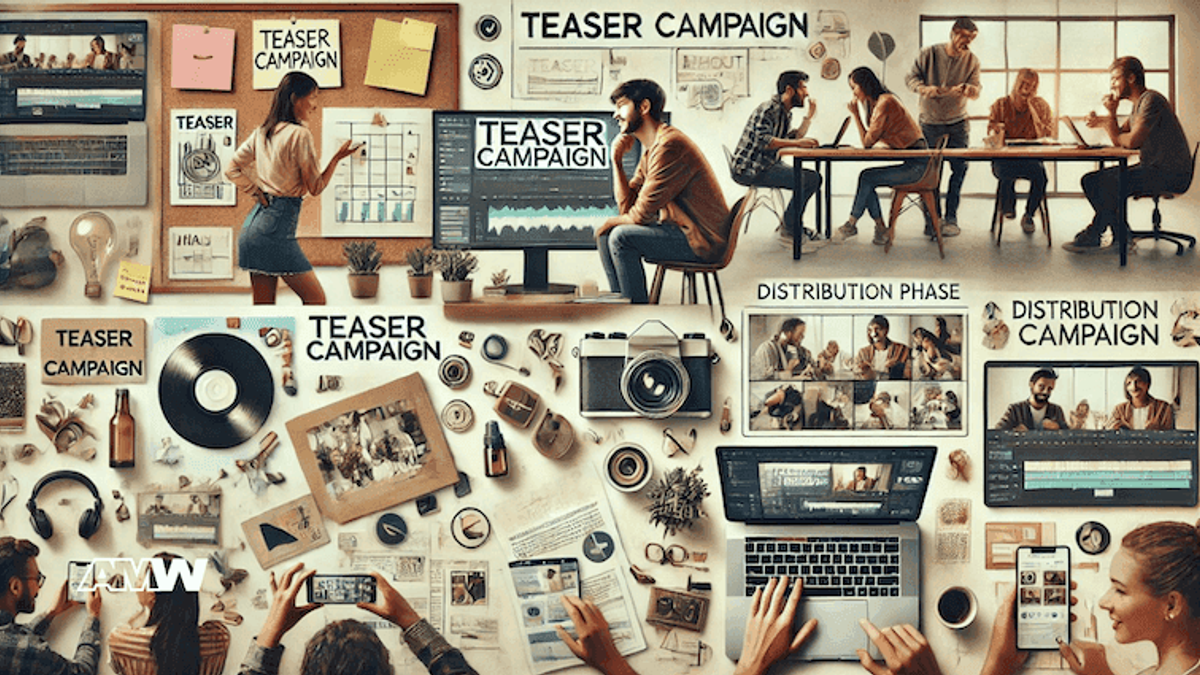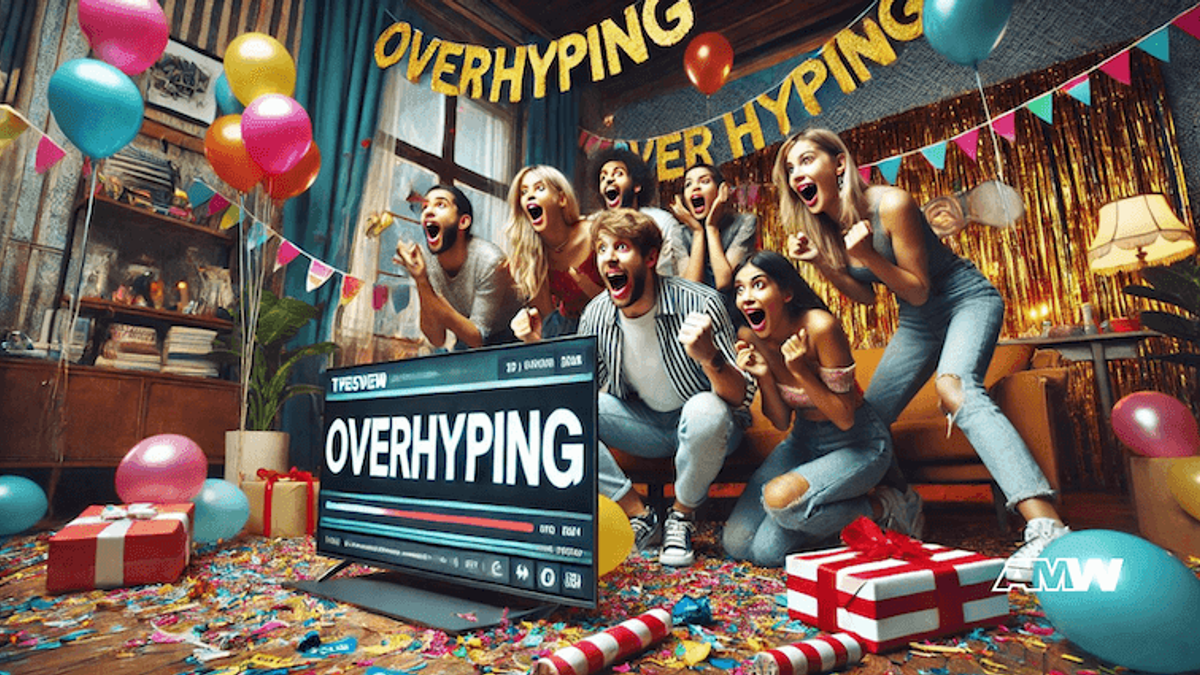Teaser Campaigns: Hook, Line, and Sinker

Teaser campaigns can be a powerful tool in digital marketing strategy, designed to build anticipation and engagement among potential customers. By providing just enough information to pique interest without revealing all the details, businesses can generate buzz and excitement leading up to an upcoming event, product launch, or new collection.
Quick Summary
Teaser campaigns in digital marketing effectively build anticipation and engage potential customers by revealing just enough information to spark curiosity. By deploying a series of teaser emails and social media posts, brands create mystery and excitement leading to significant events like product launches. Key elements include understanding the audience, crafting compelling messages, utilizing impactful visuals, and maintaining consistent branding. Ultimately, the goal is to transform anticipa
This method taps into human curiosity and the desire for the latest and most exciting news, making it an excellent marketing tool.
Building anticipation and engagement can be important. Teaser campaigns can create a sense of mystery and encourage the audience to stay tuned for the big reveal.
Ready to Grow Your Business?
Get a free consultation and custom strategy tailored to your goals.
By strategically releasing teaser emails, social media posts, and other forms of teaser announcement emails, brands can build hype and ensure that their launch day is met with enthusiasm.
Remember, while this post may offer some ideas, it’s essential to conduct your own research to tailor any strategies or tips to your business needs.
Understanding Teaser Campaigns

A teaser campaign is a marketing tactic that involves sharing intriguing and minimal information about an upcoming event, product, or service to generate interest and curiosity among the audience. The goal is to create anticipation and drive engagement without disclosing all the details too early.
This strategy often includes a series of teaser emails, social posts, and digital content that gradually build up to the final reveal.
Teaser campaigns have been a part of marketing strategies for decades, evolving significantly with the rise of digital platforms. In the past, brands might have relied on print advertisements, billboards, or TV commercials to create teaser campaigns.
Successful teaser campaigns may often feature a catchy subject line, eye-catching visuals, and a call to action that encourages recipients to engage further, such as visiting a website or signing up for more information.
Key Elements of a Successful Teaser Campaign
Creating a successful teaser campaign may require careful planning and execution. Here are some key elements to consider:
- Clear Objectives and Goals: Before launching a teaser campaign, define what you aim to achieve. Whether it's increasing engagement, driving traffic to a website, or boosting pre-orders for a new product, having clear objectives can guide the entire campaign's message and strategy.
- Audience: Understanding your audience is crucial. Consider tailoring your teaser content to resonate with their interests and preferences. For instance, if you're launching a new watch, your teaser emails and social media posts should perhaps appeal to watch enthusiasts and fashion-conscious individuals.
- Compelling Message: The main message of a teaser campaign should be intriguing and carefully expressed to generate interest without revealing too much. Consider use phrases like "stay tuned," "sneak peek," and "big news" to build anticipation.
- Visuals: Visuals may play an important role in teaser campaigns. Consider using high-quality images, videos, and graphics to grab attention and make the content shareable. An example could be a countdown timer on the website or social media to build excitement for the launch day.
- Strategic Timing: Timing may be everything in a teaser campaign. Consider planning the release of the teaser emails, social media posts, and other content to maintain a steady buildup of excitement. Avoid revealing the exact date too early; instead, it can be a good idea to create a sense of urgency as the launch day approaches.
- Follow-Up Emails: Consider using follow-up emails to keep the momentum going. After the initial teaser email, consider sending subsequent emails that reveal a bit more information each time, maintaining the audience's interest and engagement. For instance, a teaser email campaign for an upcoming sales event could start with a catchy subject line like "Something Big is Coming…" and follow up with "Get Ready for the Big Reveal!"
- Call to Action: Every piece of teaser content should include a clear call to action. Consider encouraging viewers to sign up for updates, visit the website, or share the teaser with their friends. This can boost engagement and help spread the word about upcoming product releases or events.
- Consistent Branding: Ensure that all elements of the teaser campaign are consistent with the brand's identity. This can include the tone of your email copy, the style of the visuals, and the overall messaging. Consistent branding may help reinforce the brand in the minds of the audience and make the campaign more memorable.
- Creating Mystery and Intrigue: The essence of a teaser campaign is often to create mystery. Provide just enough information to hook the audience but leave them wanting more. For example, a teaser campaign for a new product could include a blurred image of the product with a message like, "Can you guess what's coming?"
- Effective Use of Social Media: Consider leveraging social media platforms to amplify the teaser campaign. Consider using hashtags, teaser videos, and interactive posts to engage and encourage the audience to share your content.
Whether it's through teaser emails, social media posts, or a combination of both, the goal can be to make your audience feel excited and eager for the big reveal.
Benefits of Teaser Campaigns

Teaser campaigns are often designed to generate buzz and excitement around an upcoming event, product launch, or new collection. By creating a sense of mystery and anticipation, these campaigns can build brand hype.
Building Brand Awareness
Teaser campaigns can play a role in building brand awareness. When executed well, a teasing campaign can make a brand stand out.
Using social media and email marketing to spread teaser announcement emails can help reach a wider audience and keep the brand top-of-mind. A well-crafted teaser email campaign can introduce potential customers to a brand.
Ready to Grow Your Business?
Get a free consultation and custom strategy tailored to your goals.
Teaser campaigns can be marketing tools for increasing audience engagement. By crafting a compelling message and strategically releasing teaser emails and social media posts, one can encourage the audience to interact with the content.
This interaction can take many forms, such as sharing your posts, commenting, or signing up for updates.
One of the primary goals of a teaser campaign is to drive traffic and sales.
As the launch day approaches, the excitement from the teaser campaign can translate into higher sales and a successful product release.
Strategies for Creating a Teaser Campaign

To create a successful teaser campaign, one should set clear objectives and goals. Clear objectives can guide that the campaign aligns with the desired outcomes.
Identifying the Audience
Understanding your audience can be important for creating effective teaser campaigns. Identify who you want to reach and tailor your messaging to their interests and preferences.
Crafting a Compelling Message
The message is at the heart of any successful teaser campaign. Your campaign's message should be carefully expressed to generate interest and anticipation without revealing too many details. Consider using intriguing language and visuals to create mystery and build hype.
Choosing the Right Channels and Platforms
Selecting the right channels and platforms can be important for reaching the audience effectively. Social media, email marketing, and your site can be avenues for spreading your teaser campaign.
For instance, consider starting with a teaser email campaign for your subscriber list, then reinforce the message with social media posts featuring countdown timers and interactive elements.
When creating teaser campaigns, it can be important to maintain consistency across all platforms. Your email copy, social media posts, and website content should convey the same main message and build anticipation in a cohesive manner.
To ensure the teaser campaigns are effective, consider using email templates and other tools to streamline the efforts. Follow-up emails can also be essential to keep the momentum going and maintain the audience's interest.
For example, after sending an initial teaser email, one can send follow-up emails and a stronger call to action as the launch day approaches.
Creating a successful teaser campaign may involve setting clear objectives, understanding your audience, creating a strong message, and choosing the right channels to reach your audience.
Whether it's a teaser email campaign, social media strategy, or a combination of both, the key is often to create just enough intrigue to make your audience excited for the big reveal.
Step-by-Step Guide to Running a Teaser Campaign

Planning and Preparation
To create a successful teaser campaign, consider starting by doing thorough market research. Understand the audience's needs, preferences, and behaviors. Consider analyzing competitors and find any gaps your upcoming event or product launch can fill.
Clear goals are essential for guiding your campaign. Determine what you want to achieve. This can be increasing brand awareness, driving traffic to your website, or boosting pre-orders for a new product. Setting specific, measurable, attainable, relevant, and time-bound goals will give a clear direction and benchmarks for success.
Creating the Teaser Content
Visuals and Graphics
Visuals can be a critical component of a teaser campaign. Consider using great graphics, images, and videos to grab attention and build intrigue. Strong visuals can be more likely to be shared, extending the reach of your campaign.
For example, a blurred image of a new watch with a caption like "Can you guess what's coming?" can generate buzz and interest.
Ready to Grow Your Business?
Get a free consultation and custom strategy tailored to your goals.
Teaser Captions and Messages
Crafting compelling teaser captions and messages can be important for engaging your audience. A teaser email campaign should feature catchy subject lines and intriguing content that reveals just enough to pique interest without giving away all the details.
The goal is to create mystery and anticipation, encouraging you to stay tuned for the big reveal.
Launching the Campaign
Scheduling and Timing
Timing can be important in a teaser campaign. Consider planning the release of the teaser content to create a steady buildup of excitement. Avoid revealing the exact date too early. Scheduling teaser emails and social media posts at optimal times can ensure maximum visibility and engagement.
Multichannel Approach
A successful teaser campaign often leverages multiple channels to reach a broader audience. Consider combining teaser email campaigns with social media posts, blog updates, and even paid ads to create a cohesive and widespread campaign.
Monitoring and Adjusting
Tracking Metrics and KPIs
Monitoring the performance of a teaser campaign can be essential for making data-driven adjustments. Track key metrics and KPIs such as open rates, click-through rates, social engagement, and website traffic.
These can help you understand what is working and where improvements are needed.
Making Necessary Adjustments
Based on the tracking data, make necessary adjustments to optimize your campaign. If certain teaser emails have low open rates, consider adjusting with different subject lines. If social media engagement is lagging, then one can consider to try varying the posts' timing or content.
Flexibility and responsiveness can be key to maintaining momentum and ensuring the campaign's success.
Common Pitfalls to Avoid

Overhyping Without Delivering
One of the biggest mistakes in a teaser campaign can be overhyping without delivering on promises.
Consider ensuring that your big reveal meets or exceeds the expectations you've set during the pre-launch campaign.
Lack of Clear Messaging
Clear and consistent messaging can be important in a teaser campaign.
Avoid confusing your audience with vague or conflicting messages. Ensure that all your teaser emails, social media posts, and other content clearly communicate the campaign's main message and build intrigue without overwhelming your audience with too many details.
Poor Timing and Scheduling
Timing missteps can undermine the effectiveness of your teaser campaign. Launching your campaign too early or too late can reduce its impact.
Carefully plan the schedule of your teaser content to maintain a steady buildup of excitement and ensure maximum engagement as the launch day approaches.
Ignoring Audience Feedback and Engagement
Engaging with your audience can be important for a successful teaser campaign.
Consider paying attention to feedback and interactions on your social media platforms and follow-up emails. Consider using this to refine your strategy and improve. Ignoring audience engagement can lead to missed opportunities for building stronger connections and boosting interest.
Whether it's through teaser email campaigns, social media strategies, or a combination of both, the key is to create just enough intrigue to make your audience excited for the big reveal.
Conclusion

Teaser campaigns can be an effective digital marketing strategy designed to create excitement for an upcoming event, product launch, or new collection.
By strategically releasing intriguing and minimal information through teaser emails, social media platforms, and other channels, brands can generate buzz, build hype, and keep their audience eagerly anticipating the big reveal.
Ready to Grow Your Business?
Get a free consultation and custom strategy tailored to your goals.